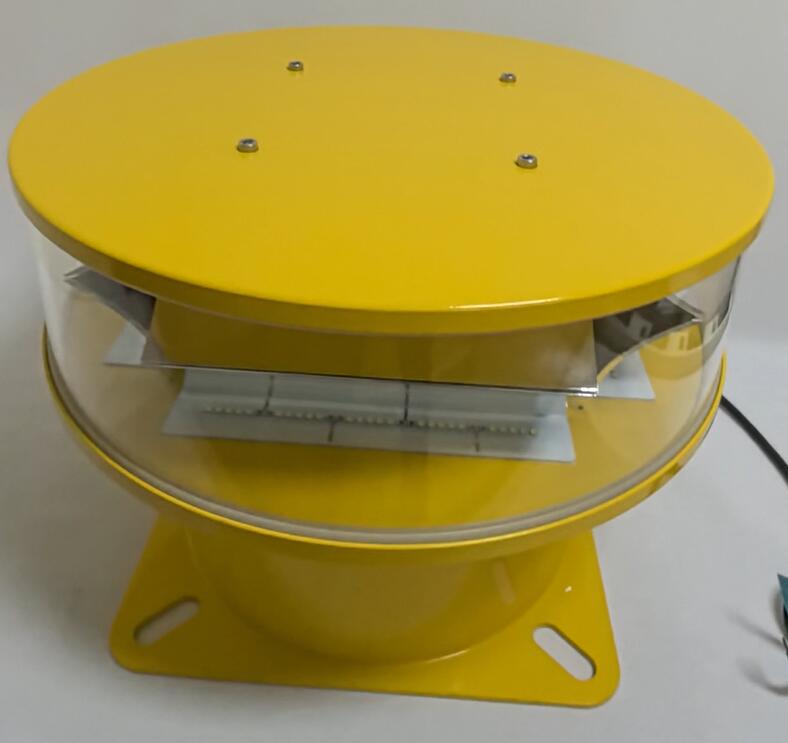Posted: 2025-03-07
Aircraft warning lights are essential safety devices installed on tall structures such as towers, buildings, and wind turbines to ensure aviation safety. These lights alert pilots to the presence of obstacles, especially during low visibility conditions. If you're in the market for aircraft warning lights, understanding the factors that influence their price is crucial. This article explores the key elements that determine aircraft warning light price and provides insights to help you make an informed decision.
1. Types of Aircraft Warning Lights
The type of warning light you choose significantly impacts the aircraft warning light price. There are two main categories:
Low-Intensity Warning Lights: These are typically used on structures under 150 meters. They are less expensive but suitable for shorter obstacles.
High-Intensity Warning Lights: Required for structures exceeding 150 meters, these lights are more powerful and visible from greater distances. Consequently, they come at a higher price.
Additionally, LED-based warning lights are becoming increasingly popular due to their energy efficiency and long lifespan, but they may cost more upfront compared to traditional incandescent lights.

2. Regulatory Compliance
Aircraft warning lights must comply with aviation safety regulations set by organizations like the Federal Aviation Administration (FAA) or the International Civil Aviation Organization (ICAO). Lights that meet these stringent standards often come at a higher aircraft warning light price due to the rigorous testing and certification processes involved. Non-compliant lights may be cheaper but could pose safety risks and legal liabilities.
3. Durability and Build Quality
The durability of aircraft warning lights is another critical factor affecting their price. High-quality materials and robust construction ensure the lights can withstand harsh weather conditions, such as extreme temperatures, heavy rain, and strong winds. While these lights may have a higher upfront cost, they often result in lower maintenance and replacement expenses over time.
4. Installation and Maintenance Costs
The aircraft warning light price is not limited to the product itself. Installation and maintenance are additional expenses to consider. Complex installations, such as those on offshore wind turbines or remote locations, can significantly increase costs. Similarly, lights that require frequent maintenance or specialized equipment for servicing may add to the overall expenditure.
5. Energy Efficiency
Energy-efficient aircraft warning lights, such as LED models, may have a higher initial cost but can lead to substantial savings in the long run. They consume less power and have a longer lifespan, reducing both electricity bills and replacement costs. When evaluating the aircraft warning light price, it's essential to consider the total cost of ownership rather than just the upfront expense.
6. Brand and Supplier Reputation
The brand and supplier you choose can also influence the aircraft warning light price. Established brands with a proven track record of reliability and performance often charge a premium for their products. However, opting for a reputable supplier can provide peace of mind, knowing that you're investing in a high-quality, dependable product.
7. Customization and Additional Features
Some projects may require customized aircraft warning lights to meet specific needs. Customization, such as unique mounting solutions or specialized light patterns, can increase the price. Additionally, advanced features like remote monitoring, automatic brightness adjustment, and solar-powered options may also contribute to a higher cost.
8. Market Demand and Supply
Like any product, the aircraft warning light price can fluctuate based on market demand and supply. During periods of high demand, such as during a construction boom, prices may rise. Conversely, oversupply or increased competition among manufacturers can lead to more affordable options.
When purchasing aircraft warning lights, it's essential to look beyond the initial price tag and consider factors such as type, regulatory compliance, durability, installation, energy efficiency, and brand reputation. By understanding these elements, you can make a well-informed decision that balances cost with quality and safety. Remember, investing in reliable and compliant aircraft warning lights not only ensures aviation safety but also minimizes long-term expenses. Always consult with industry experts and compare multiple suppliers to find the best value for your specific needs.
In summary, the aircraft warning light price is influenced by a variety of factors, and a thorough evaluation of these aspects will help you choose the right product for your project. Prioritize safety, quality, and compliance to ensure your investment delivers lasting value.